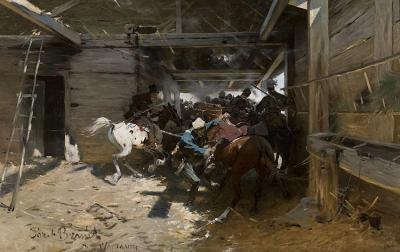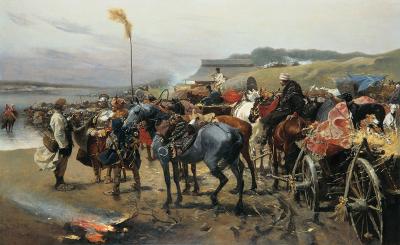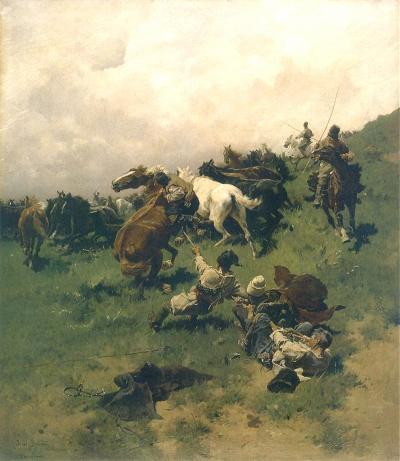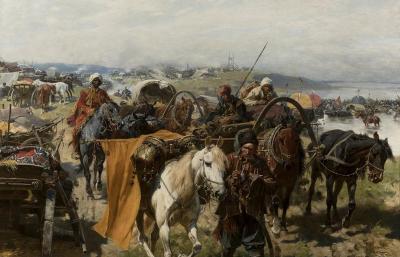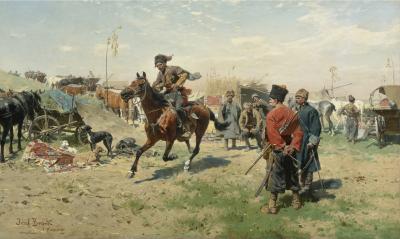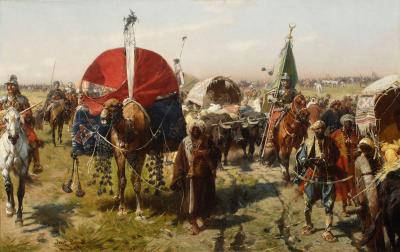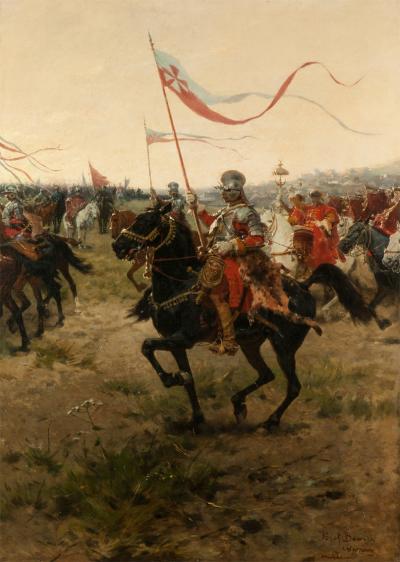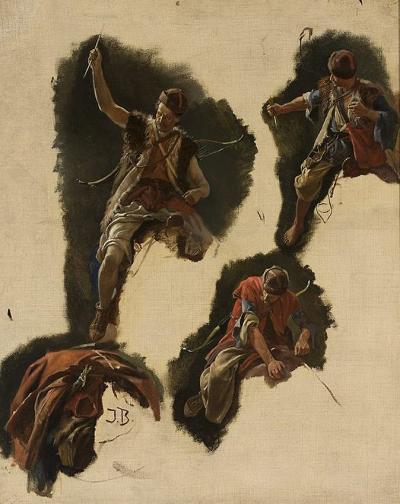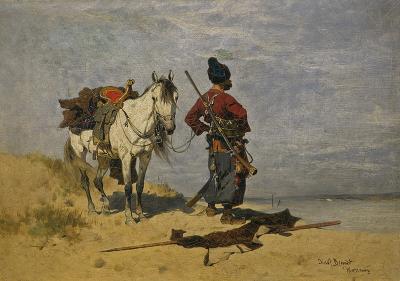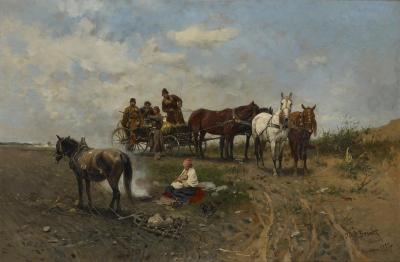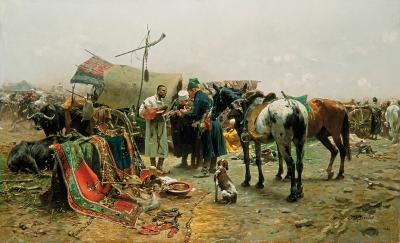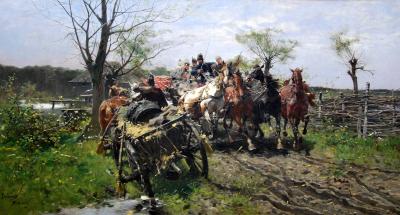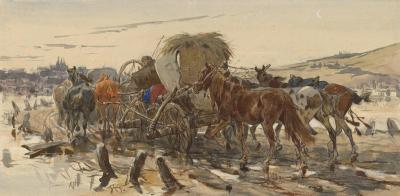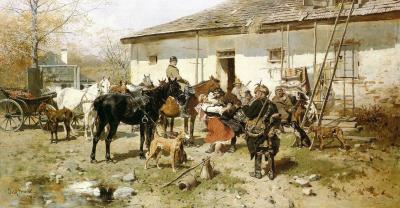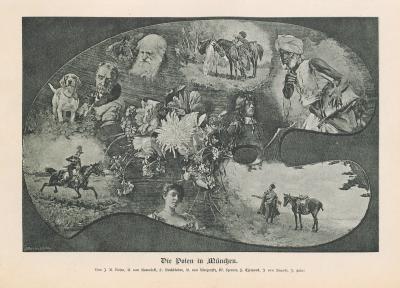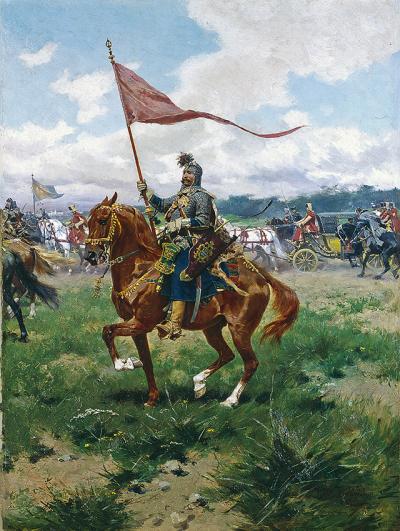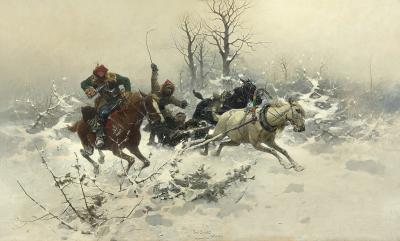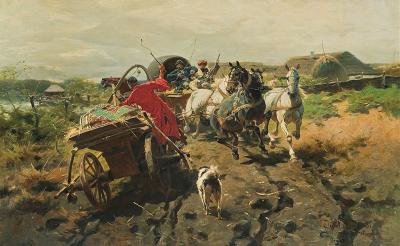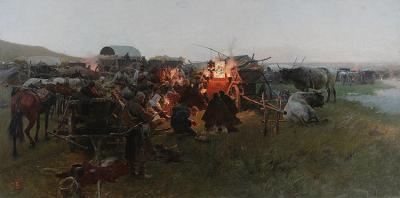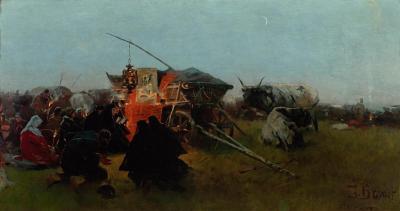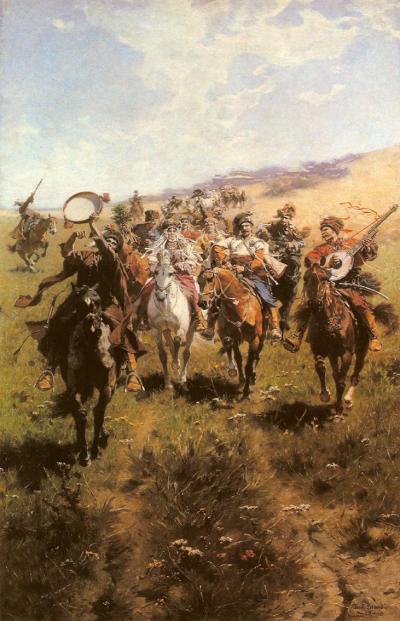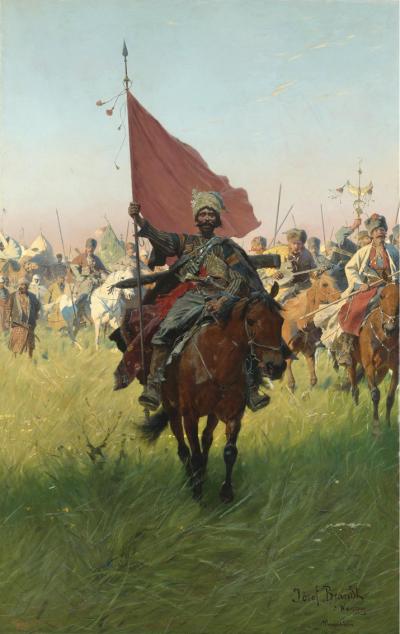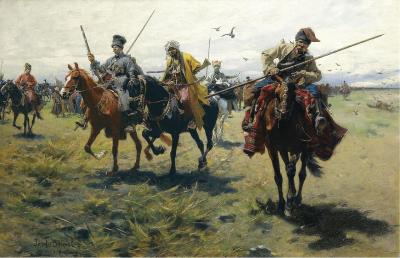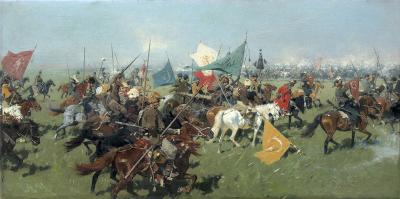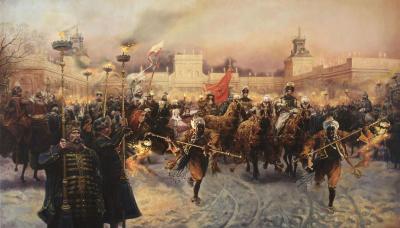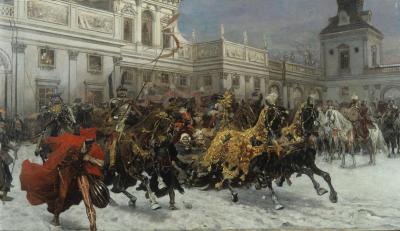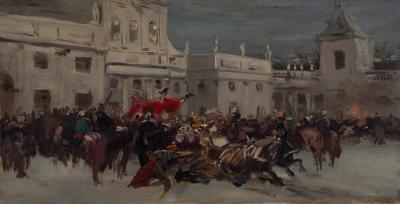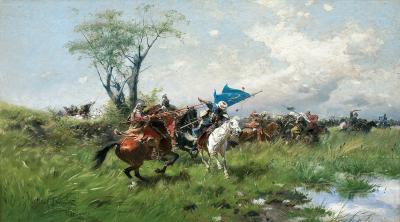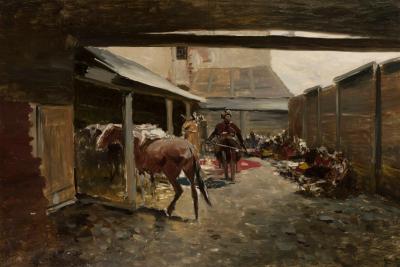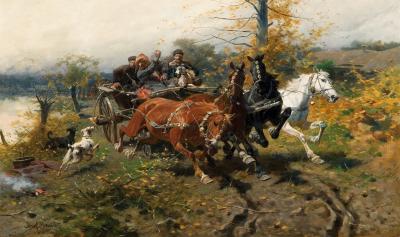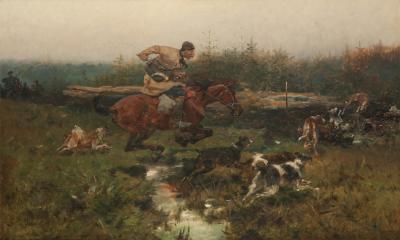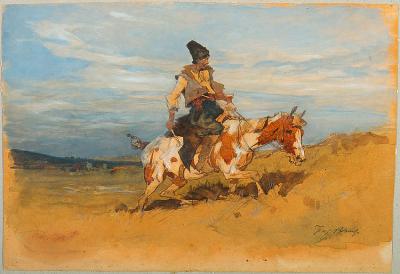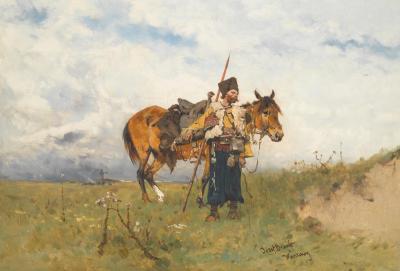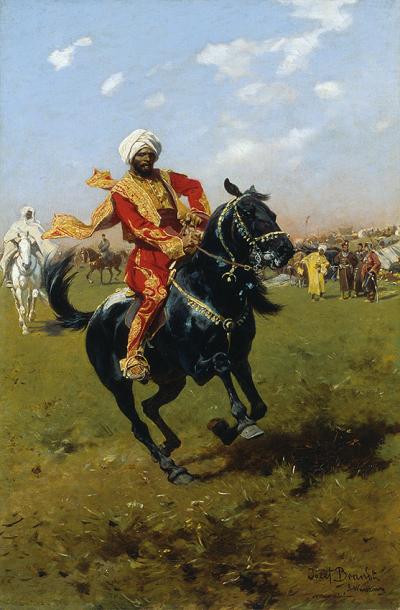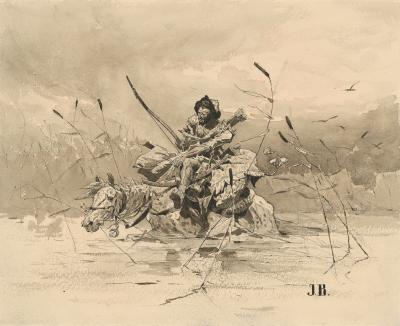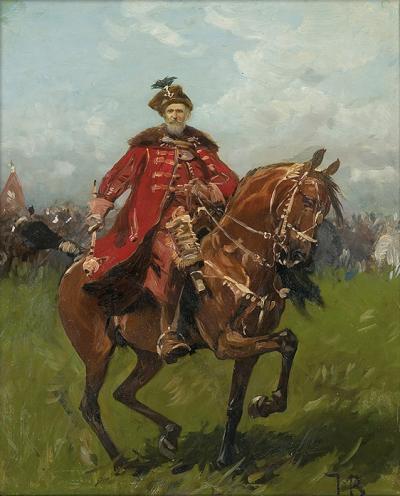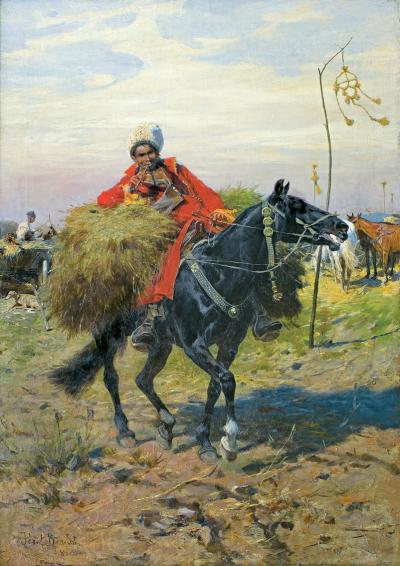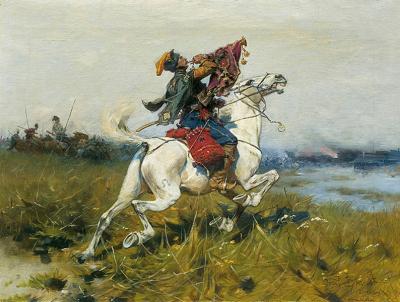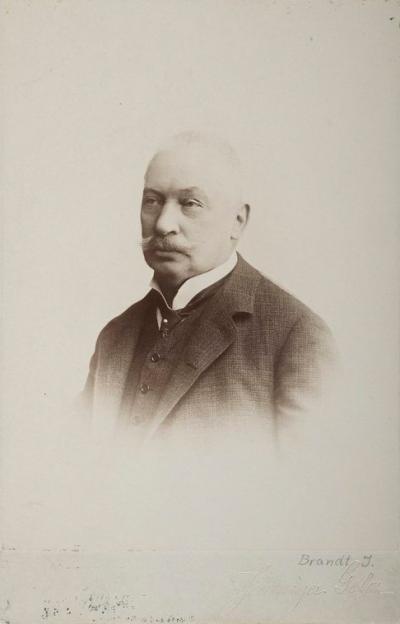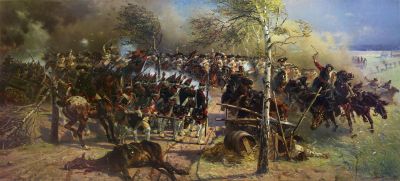Józef Brandt
Mediathek Sorted

As a result of his artistic success, his social status and not least the opening of his splendid studio in Schwanthalerstraße, Brandt became the main focus of attraction in the Munich “Poland colony”.[51] By this I mean those Polish artists who emigrated to Munich from 1828 onwards (but above all since the January Uprising in 1863), to study at the Academy of Fine Arts and under private teachers in the city. Between 1863 and 1875, more than eighty Poles were admitted to the Munich Academy. Brandt proved to be not only sociable, but also hospitable and helpful to younger students arriving from Poland. Since he also had a talent for teaching, he soon established an unofficial painting school in his studio. For a time his students included Tadeusz Ajdukiewicz, Jan Chełmiński, Józef Chełmoński, Michał Gorstkin-Wywiórski, Alfred Wierusz-Kowalski and Franz Roubaud, a native of Odessa, who moved to Munich in 1877 from the drawing school there and later travelled to Caucasia and Uzbekistan. Brandt took special care of Szerner, who had also taken part in the January uprising and arrived in Munich completely impoverished in 1865. Indeed he even went so far as to put him up in his studio.
When young Polish painting students visited the Neue Pinakothek (i. e. the collection of contemporary paintings), they discovered with a touch of patriotism that paintings by three Polish artists, Brandt, Maksymilian Gierymski and Wierusz-Kowalski, were also displayed there. Marian Trzebiński, who matriculated in the Munich Academy in 1893, wrote the following in a letter: “As Poles, we were very pleased to see two paintings by Brandt, which also had Polish language signatures '‚z Warszawy‘ und ‚Monachium‘, not Munich, in a prominent place:. […] Such tolerance gave us an idea of the sensitivity and highly developed culture of the Bavarian people”.[52] The Neue Pinakothek probably purchased one of Brandt's pictures in 1885, the year he painted it. This was a one by two metre, large format painting entitled “Cossack horses in a Snowstorm. A second, smaller picture,"Defence", is undated and like the first, it bears the signature "Józef Brandt z Warszawy, Monachium" (English: from Warsaw, Munich).[53]
[51] Die Polenkolonie: Brandt, Gierymski, Chelminski, Kowalski, Kozakiewicz, in: Rosenberg 1887 (see further reading), page 47
[52] Ptaszyńska 2008 (see note 32), page XII
[53] Catalogue of the painting collection in the Royal New Pinakothek in Munich, München 1902, page 25 f.: “COSSACK HORSES IN A SNOW STORM”. A shepherd sits under a hooped cart, protected from the storm by a piece of canvas. He is observing the horses jostling in the distance. Three horses are attached to the cart, on one of which is a spitz. In the foreground in the snow is a pot being heated on the remains of a fire. Oil on canvas. Bottom right: Józef Brandt z Warszawy Monachium 1885. Height. 1.12 m Width. 2.05 m. DEFENCE. A farmstead is being defended by the cavalry. In the middle a peasant is holding the restless, now riderless, horses. Two people are firing on the enemy from the roof of a barn. Oil on canvas. Bottom right: Józef Brandt Monachium. z Warszawy. Height. 0.98 m Width. 1.65 m.“– A painting entitled “Defence of a Farmstead by Cavalrymen”, Oil on canvas, 98 x 165 cm, can be found in the Bavarian State Collection of Paintings in Munich (Hans F. Schweers, Gemälde in deutschen Museen, I, 1, München u.a. 1994, page 203). It was not possible to get information there.

















































































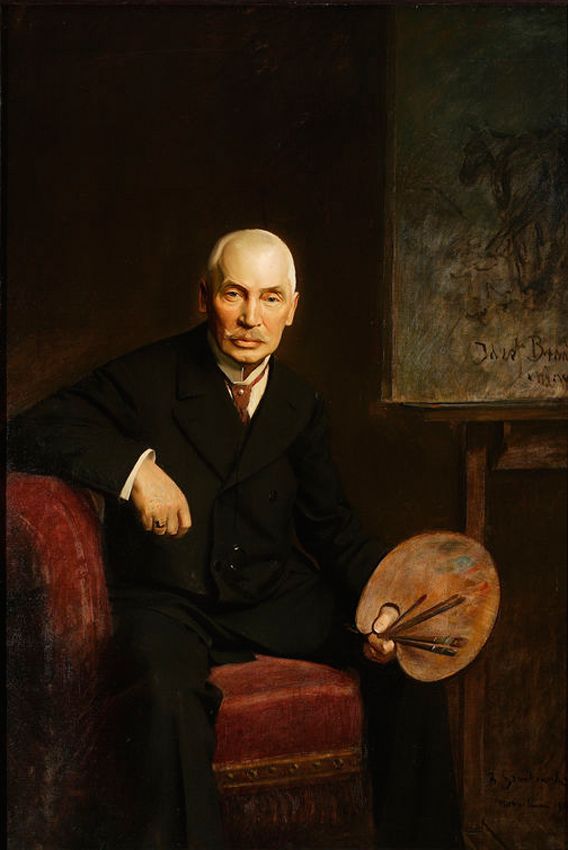
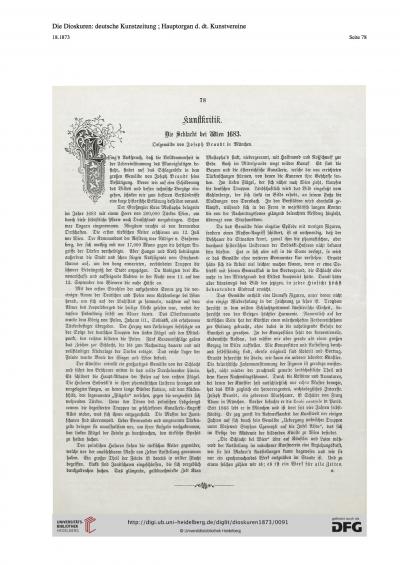
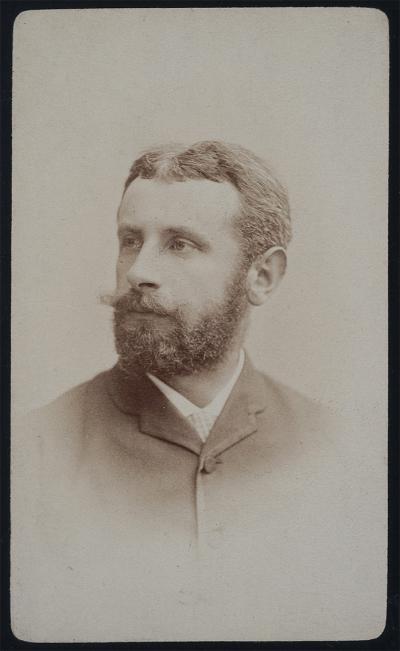
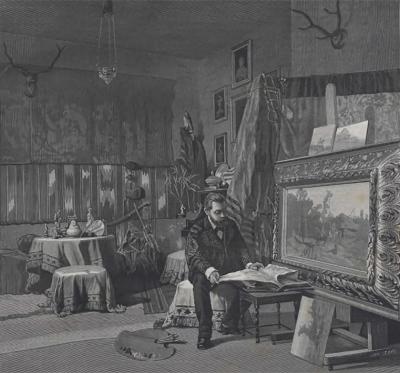
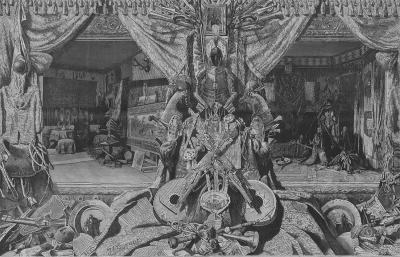
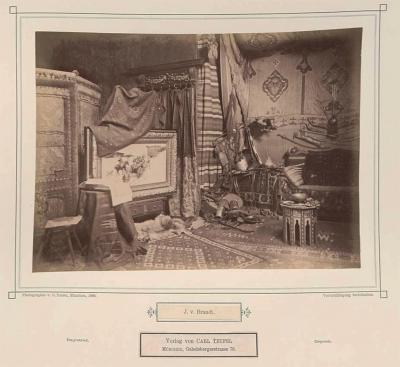
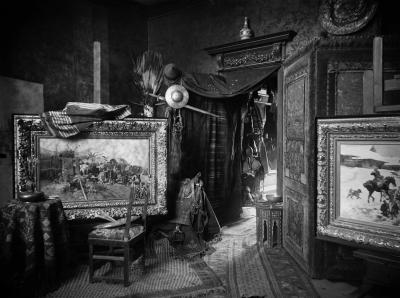
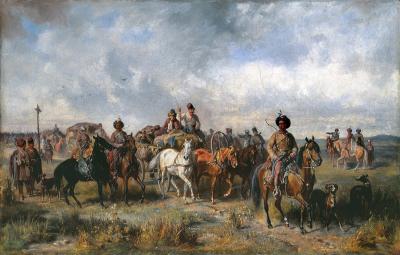
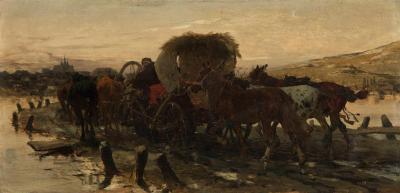
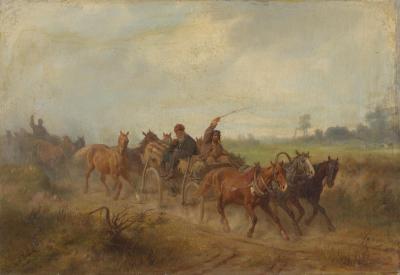
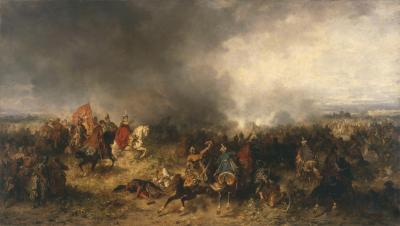
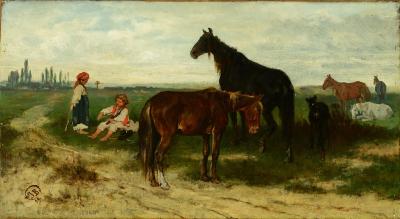
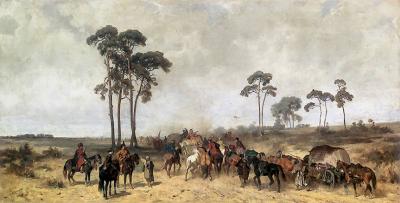
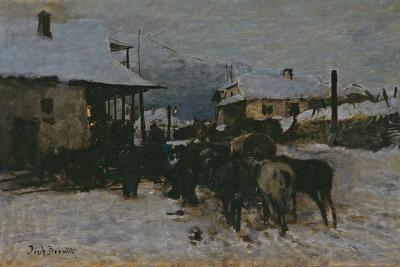
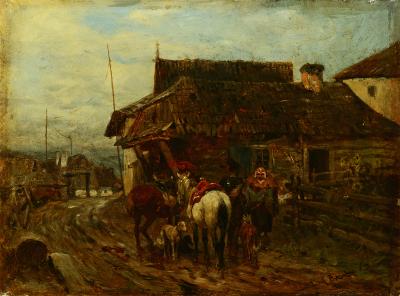
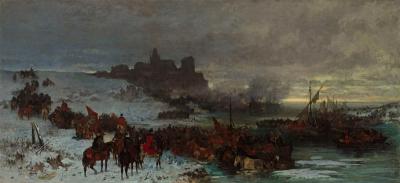
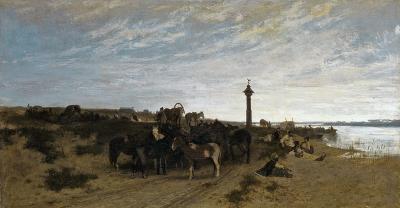
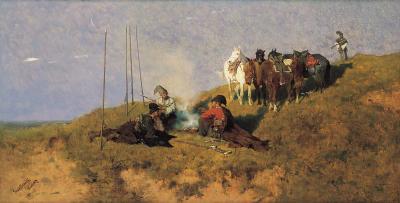
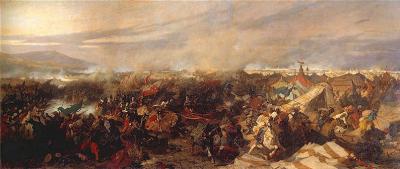
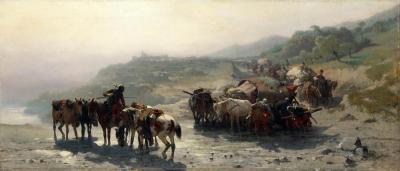
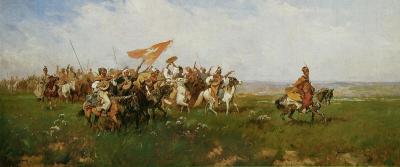
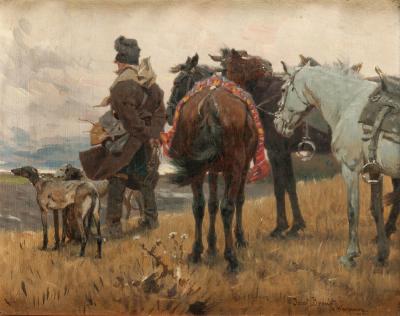
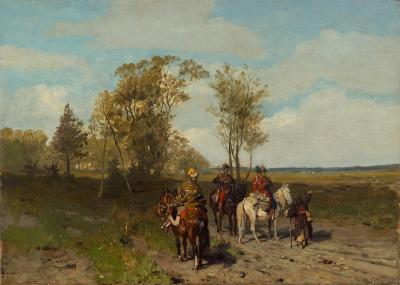
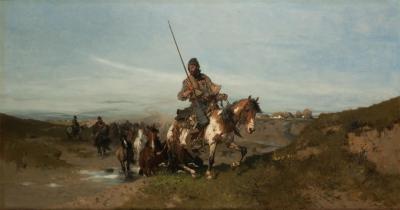
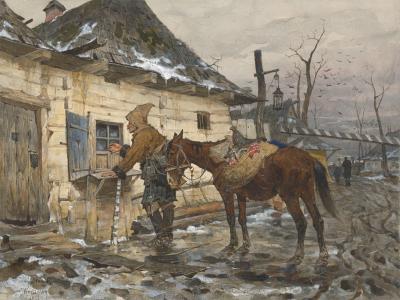
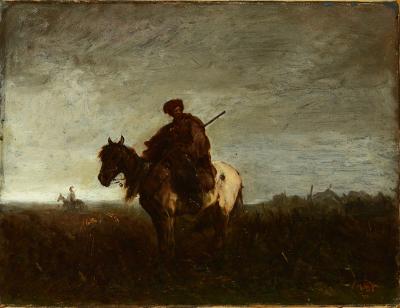
![Fig. 25: The Liberation of Prisoners, 1878 Fig. 25: The Liberation of Prisoners, 1878 - The Liberation of Prisoners [from the hands of Tatars], 1878. Oil on canvas, 179 x 445 cm, National Museum Warsaw/Muzeum Narodowe w Warszawie](/sites/default/files/styles/width_100_tiles/public/assets/images/25_befreiung_der_gefangenen_1878_mnw_cyf.jpg?itok=i5_t7XqM)
